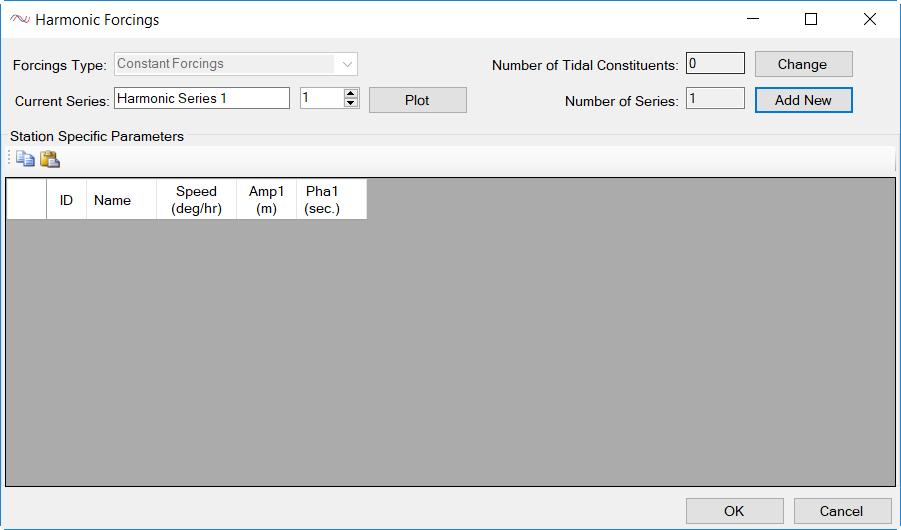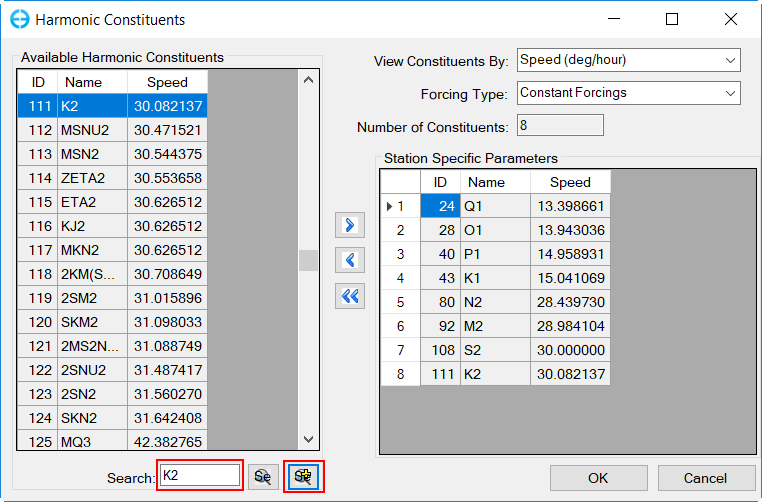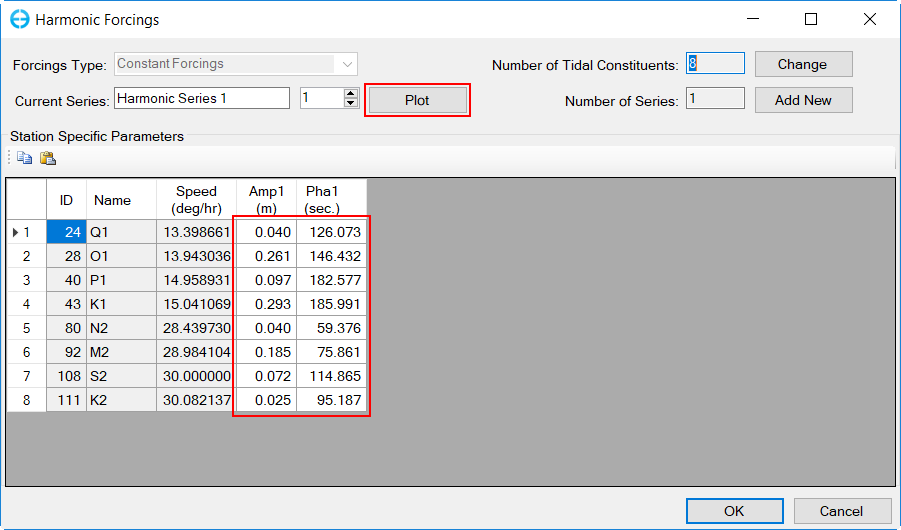
The form modifying the external time series for the Harmonic Forcings is shown in Figure 1. This option is different from other external forcing options in that before updating the form by typing or pasting values, the user must specify the forcing of an arbitrary number of combinations of harmonic components from 234 predefined tidal constituents. This is done by from the form in Figure 1 by:

Figure 1. Harmonic Forcing form.
After selecting Change a table containing the 234 predefined tidal constituents will appear as shown in in Figure 2. The user should then select one or more constituents to be added.

Figure 2. Harmonic Constituents form.
These constituents may be sorted either by angular speed (degrees/hours) or period (days, hours, minutes, seconds) with the drop-down list View Constituents By.
In the Forcing Type frame the user has three options; constant, linear variation and quadratic variation. It is generally recommended to use a constant forcing. With the other two options the user must specify additional one or two amplitude and phase for each tidal constituent, respectively.
Once finished adding constituents, the data for phase and amplitude for each tidal constituent needs to be entered as shown in Figure 3. EFDC will vary the final (i.e. applied) phase and amplitude for each tidal constituent using the specified method and values. The Plot button can be use to see tidal time-series plot.

Figure 3. Add data for constituents .